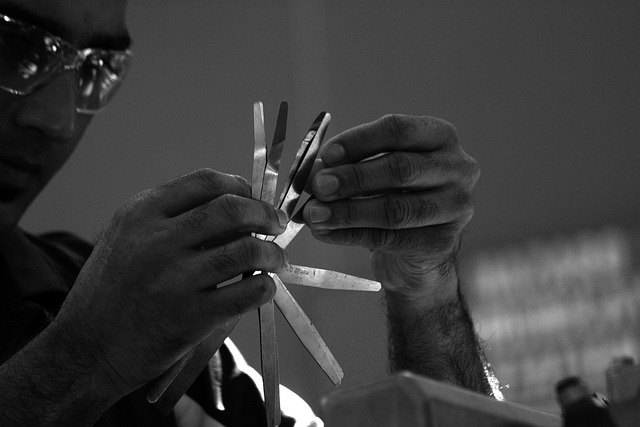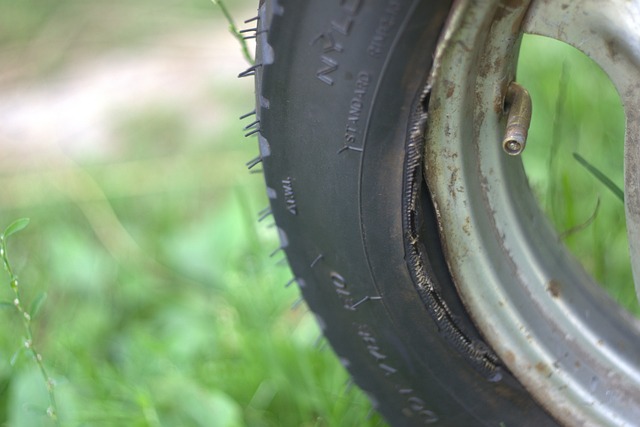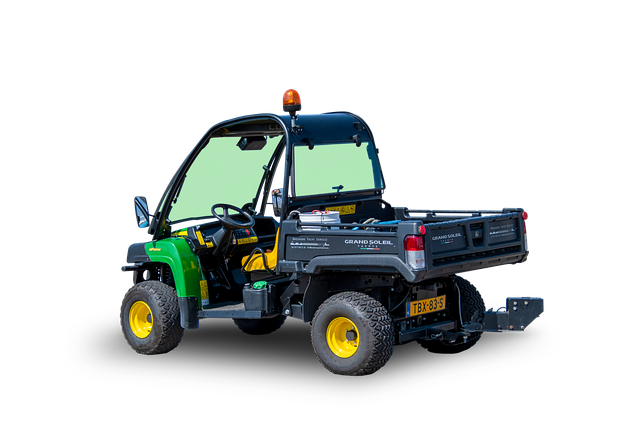Tesla Falcon Wing Door Repair requires specialized expertise due to their unique butterfly mechanism and GPS-based limit settings. Professional auto collision centers, equipped with mechanical engineering knowledge, ensure precise calibration of GPS sensors for safe operation. A systematic approach involves frame straightening, limit adjustments, and regular maintenance checks to maintain aesthetic appeal and vehicle performance. Proactive repair extends the life of Tesla falcon wing doors and saves costs.
Tesla’s Falcon Wing doors are iconic, but their intricate GPS-based limit settings pose unique challenges during repairs. This article delves into the intricacies of these innovative doors, exploring the GPS limit settings that control opening and closing angles. We dissect common repair difficulties and offer solutions, best practices, and expert tips for maintaining these futuristic features, ensuring your Tesla retains its distinctive style and functionality. Learn how to tackle Falcon Wing door repairs like a pro.
- Understanding Tesla Falcon Wing Doors and Their GPS Limit Settings
- The Challenges of Repairing These Unique Doors
- Solutions and Best Practices for Effective Door Repair and Future Maintenance
Understanding Tesla Falcon Wing Doors and Their GPS Limit Settings

Tesla Falcon Wing Doors, a striking feature on some Tesla models, are known for their unique, butterfly-like opening mechanism. These doors have become iconic in the automotive world, blending style and functionality. However, like any other vehicle component, they require maintenance and repair, especially when it comes to GPS-based limit settings. These settings play a crucial role in ensuring the safety and smooth operation of these advanced doors.
The GPS limit settings on Tesla Falcon Wing Doors are designed to prevent damage during opening and closing. They set boundaries for door movement, protecting both the vehicle and its surroundings. When a collision or impact occurs, these limits become vital in controlling the door’s motion, minimizing potential dents or scratches. Collision repair services specializing in Tesla vehicles can assist with repairs, ensuring that GPS settings are accurately adjusted after any incident, thus maintaining the car’s safety features and aesthetic appeal.
The Challenges of Repairing These Unique Doors

Repairing the Tesla Falcon Wing doors presents a unique set of challenges due to their intricate, butterfly-like design and sophisticated GPS-based limit settings. Unlike conventional car doors, these innovative panels require precise alignment to ensure seamless operation within the vehicle’s aerodynamic profile and safety parameters. Any misalignment can lead to issues with opening and closing, compromising both functionality and the overall driving experience.
Additionally, the GPS-based limit settings play a crucial role in managing door movement, particularly during parking and low-speed maneuvers. These sensors and software components must be calibrated accurately to avoid interference from external factors like terrain elevation or nearby structures. Engaging in Tesla falcon wing door repair demands specialized tools and expertise in both mechanical engineering and automotive technology, making it best handled by trusted auto collision centers equipped to deal with such intricate vehicle repair tasks.
Solutions and Best Practices for Effective Door Repair and Future Maintenance

When addressing Tesla Falcon Wing Door Repair, a systematic approach is key to ensuring long-lasting results and future maintenance ease. Beyond simply fixing the damaged doors, an automotive body shop should focus on comprehensive solutions that include meticulous frame straightening and precise GPS-based limit setting adjustments. This multi-faceted strategy not only guarantees optimal door alignment but also enhances overall vehicle aesthetics and performance.
Regular maintenance checks, including routine inspections and timely repairs, are best practices for any vehicle collision repair. For Tesla Falcon Wing doors, this involves staying attuned to potential issues like loose hinges or misaligned panels, addressing them promptly. By adopting these proactive measures, owners can avoid more complex—and costly—repairs down the line, making it a win-win for both the vehicle and its owner.
Tesla’s falcon wing doors, while iconic, present unique challenges in terms of repair and maintenance due to their complex GPS-based limit settings. Understanding these mechanisms is crucial for effective repairs. By employing specialized techniques and adhering to best practices, professionals can ensure proper functioning and longevity of these distinctive features. For those undertaking Tesla falcon wing door repair, a thorough grasp of the technology and regular upkeep will be key to preventing future issues, ensuring a smooth and safe driving experience.













